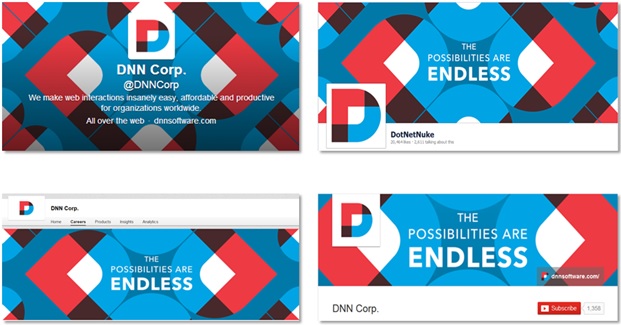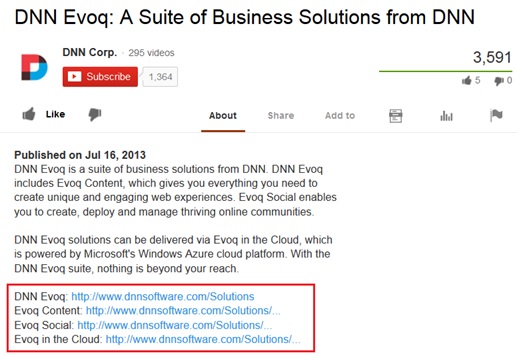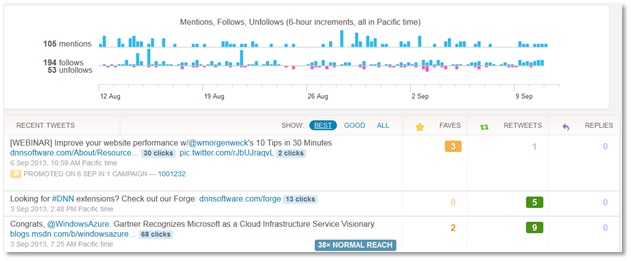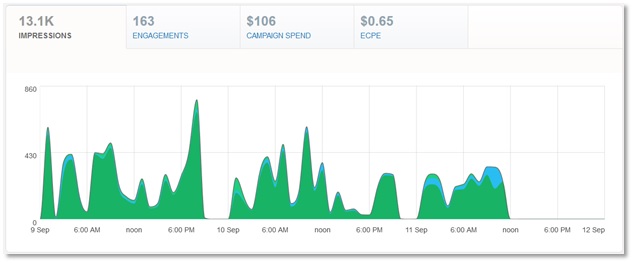Introduction
Some organizations are rocking the house with social media (a few come to mind: Coca Cola, Starbucks, Virgin America). At the same time, many organizations I speak to are challenged to achieve the results they desire using social media.
ON-DEMAND WEBINAR: Social Media Optimization: 10 Tips in 30 Minutes.
The challenge? It’s usually a combination of “lack of know-how” and lack of resources (or both). So here are ten easy steps to take to optimize your social media channels. You can perform these steps in any order.
1) Use consistent branding across channels.

For personal use of social media, I recommend that people use the same profile photo across all social channels. Why? Because followers who know you on Twitter will recognize you on SlideShare. So the consistent photo removes a barrier to gaining that new follower. For organizations, use the same logo everywhere. Also, if you’re running a campaign, use the same campaign theme across your channels.
2) Strategically hyperlink from profile pages.
Check out all the valuable hyperlinks we’re afforded on the DNN Google+ page. Take advantage of these opportunities. You can drive clicks (to your web properties) from views of your social profile pages. And, the inbound links will help with Search Engine Optimization (SEO). Don’t be too cute, however. Make sure your link’s anchor text aligns with the page you’re linking to.
Additional tip: YouTube allows hyperlinks in the description area of your video:

3) Reciprocate.
Gain a new follower on Twitter? Verify they’re a “real” person (vs. a “bot”), then follow them back. It’s a nice gesture on social media to follow back. And, by following back, you get the opportunity to listen to what your followers are saying. On Twitter, following back allows your followers to send you a “Direct Message” (a private message), which is often an effective channel for customer service or related inquiries.
4) Tag (link to) other users.
When I share an article on social media, I like to “link” to both the publication and the author. Why? Because it gets you (or your organization) noticed by the publication and the author (in addition to sending them some good karma). The author may follow you, retweet you or respond to you. In turn, the author’s followers may decide to follow you. In short, good things can happen.
5) Learn the tricks of the trade of each social network.
Using the “retweet” button on Twitter. Setting up a Google+ Hangout. Managing your Circles in Google+. Each of these things is unique to that service: get to know these unique features well and your use of that service becomes more effective.
6) Measure, evaluate, adjust.

Image: Analytics dashboard from Twitter.
Become BFF’s with analytics (and yes, you really should become best friends forever). Did you know: Twitter now provides free analytics dashboards to all Twitter users (read more on the Constant Contact blog). Use analytics to evaluate your social media effectiveness across a number of dimensions (e.g. content type, content format, topic, time of day, etc.). Metrics to track include reach, engagement and traffic. Next, draw conclusions that help inform your subsequent social sharing.
7) Mix it up.
I know of professional sportswriters whose Twitter profile is an automated feed of every article they write (and nothing else). While I love their sports writing, I don’t follow them on Twitter. Instead, I follow other sportswriters who comment, respond, retweet and engage. So mix it up: share content, retweet, respond and engage. Don’t be a social media automaton.
8) Engage proactively and respond promptly.
Users on social media can be chatty. And they expect responses to their issues or comments. Your role: listen to what they’re saying and respond promptly. A same-day (or same-hour) response is far better than one that comes tomorrow or next week.
9) Cross-promote your channels.
While your primary goal is to “be useful” on any given social network, there are times when you’ll want to promote your other social networks. Let fans know that you “exist” elsewhere. And, when you’re running events, contests or campaigns on a particular network, use your other channels to drive additional awareness of those activities.
10) Experiment with paid advertising.

Image: a Twitter Ads dashboard for Promoted Tweets.
It’s great that you have a lot of fans and followers on social media. But did you know they’ll miss 80+% of what you post (that's my own, unscientific estimate)? That’s just reality. Paid advertising can create a higher likelihood that fans see your content – and, it extends your reach to people not currently following you. We’ve had fun experimenting with it here at DNN.
Conclusion
Social media can drive tremendous value to your organization – and, it can be a lot of fun doing it. I hope you found these tips useful. I presented a DNN webinar on this same topic recently – you can find the presentation slides below.
Are you on Google+? Feel free to
add me to your circles.